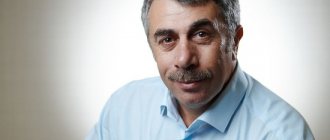Article:
OSD is a general underdevelopment of speech.
This disorder affects all aspects of the child’s speech, that is, its sound, lexical, grammatical, and semantic components. Manifestations of OHP depend on the insufficient development of various components of the speech apparatus. They can vary from complete absence of speech to speech, with elements of phonetic, lexical and grammatical underdevelopment. This disease is detected by a special diagnosis by a speech therapist. The correction program and its features are established individually by the attending physician. Among all children with speech disorders, children with ODD make up about 40%. Its strong and profound manifestations may in the future manifest themselves as dysgraphia and dyslexia. Speech therapists use the term phonetic-phonemic development or FFN and OHP to designate the immaturity of the speech system. OHP in children can be observed in the presence of dysarthria, alalia and other disorders.
Classification
According to the clinical picture of manifestations of ONR, it is divided into three groups:
- Uncomplicated form. Such children have minimal brain dysfunction, insufficient regulation of muscle tone, and immature volitional and emotional spheres.
- Complicated form. Occurs in patients with a number of neurological or psychopathic diseases, convulsive, cerebrasthenic and others.
- Gross underdevelopment. Children have lesions in the speech areas of the brain, that is, in the presence of alalia and dysarthria.
OHP also has its own degrees of severity. There are four in total:
- first degree - speechless, with the absence of commonly used speech;
- second degree – there are basic elements of common speech, poor vocabulary, agrammatism;
- third – the presence of phrasal speech, with underdevelopment of sound and semantic components;
- fourth degree – some problems in the phonetic-phonemic and lexical-grammatical aspects of speech.
Depending on the degree of complexity, the duration of correctional work of OHP by a speech therapist is determined.
Characteristics of degrees
Each degree of OSD has a certain relationship between primary and secondary speech defects, which inhibit the formation of its components. The transition from one level to another is determined by the presence of new speech capabilities and changes in its activity. The most persistent manifestations of OHP are observed with motor alalia, and less often with stuttering or rhinolalia. There are only four degrees of OHP.
ONR first degree
This disorder is characterized by a complete absence of speech, and this degree is detected immediately. It manifests itself in the following:
- Vocabulary is extremely limited. For communication, the simplest babbling words, fragments of words, syllables or onomatopoeia are used. At the same time, the baby loves to communicate, but speaks with the people around him in “his own” language. That is, the child has in his speech such words as “woof-woof”, “meow-meow”, “too-too” and the like.
- A preschooler with the first degree of OHP actively uses appropriate facial expressions and gestures and carry a semantic load. The child uses these techniques to express himself, and the adult makes every effort to understand them.
- Speech does not contain sentences or phrases consisting of several words. Only individual amorphous words with a general meaning are observed, for example, the phrase “woof-woof tu-tu” means that the dog rode the train.
- Passive vocabulary significantly exceeds active one. The baby understands speech addressed to him, but is unable to say anything.
- Words with complex composition and structure are kept to a minimum, long complex words are simply abbreviated, but their meaning can be understood. For example, the word bus may sound like abus, or tube.
ONR second degree
OHP type 2 differs from the first degree in the presence in the child’s speech of a small number of commonly used words; they may not be pronounced quite correctly. The beginning of the formation of connections between words may also be noticeable, but this is still on an unstable basis. The following symptoms are typical for grade 2 OHP:
- The child uses one word that denotes an object or some action, but in a modified form. For example, the word "bus" will sound like "abous" in any context.
- The active vocabulary is very limited; with OHP 2, they do not know all the words denoting some characteristics of an object, for example, a description of its shape, color and other characteristics.
- The child does not have the skill to combine objects into certain semantic groups, for example, tableware - spoon, fork, plate.
- The pronunciation of many sounds, words, and phrases is impaired.
Also, characteristic features of type 2 OHP are the presence of rudiments of grammatical changes depending on the complexity of the word itself. The more letters there are in a word, the more mistakes and violations the child makes in it. He actively uses words in his speech, but does not coordinate them with each other. This is how the phrases “mama kupa” appear - “mom is bathing. Thus, prepositions are simply missed or used incorrectly. The patient can make up a short story based on the picture shown and the active assistance of the parent. However, this story turns out to be extremely modest. Usually two or three syllable sentences are used. In OHP 2, the words themselves are greatly distorted, and the pronunciation of words with a polysyllabic structure is impaired.
OHP third degree
This degree is characterized by a delay in the grammatical and phonetic speech components. The child has active expressive speech and is able to construct individual phrases and has a fairly large vocabulary. The problem points of speech are:
- communicates only with parents, with other people only with a “translator”;
- sound pronunciation is not fully formed;
- in independent speech, sounds may sound incorrect;
- more complex sounds are replaced by simple ones;
- has difficulty with hissing, whistling and sonorant sounds;
- one and the same sound can replace several;
- The vocabulary is expanding, but only a small part of it is used.
Grammar is also impaired in grade 3 OHP, but the child tries to construct complex sentences, but difficulties arise with their pronunciation. The child may not formulate sentences correctly, but can create a short story. Another distinctive feature is inconsistent grammatical errors, that is, in one sentence the same error is made, but not in another phrase. The baby may lag behind in his phonetic abilities, manifested in the so-called difficult words. All these factors delay the process of preparing a child for school.
OHP fourth degree
This degree is characterized by the presence of only some difficulties and errors in speech. This creates an overall picture that prevents you from fully mastering speech, sound understanding and pronunciation. The main thing for parents in this case is to contact speech therapy specialists in order to correct all existing deficiencies as quickly as possible. Characteristic signs of OHP type 4 are:
- there are no obvious violations of sound pronunciation, the sounds themselves are delivered correctly;
- speech is slurred with unclear, blurred sound pronunciation;
- there are violations of the structure of syllables, expressed in the replacement of sounds with similar ones;
- incorrect use of certain words denoting characteristics of a particular object;
- the child may not understand or confuse the phrases “long table” and “high table”;
- difficulties in choosing the correct suffixes;
- Agrammatisms may occur, but their number is minimal.
Violations characteristic of level 4 OHP are not so common. Speech is characterized by criticality, and the grammatical structure itself is close to its norm.
Diagnosis of general speech underdevelopment stage 3
The little patient is examined in 3 stages.
Stage 1 - medical examination. It involves a pediatrician and specialized specialists - a neurologist, otolaryngologist, maxillofacial surgeon, and psychiatrist. At this stage, hardware diagnostics are carried out - x-ray of the skull, EEG, MRI of the brain, and also determine the neurological status of the small patient.
Stage 2 - neuropsychological examination. At this stage, the baby is diagnosed by a child psychologist. It evaluates the development of motor skills, personality, memory, thinking, attention and other mental functions and gives a description of a child with stage 3 ODD.
Stage 3 - speech therapy examination. The doctor evaluates all components of the child’s speech.
There are 5 components in total:
- lexico-grammatical - vocabulary, understanding of synonyms and antonyms, generalizing groups, the ability to coordinate words in case, gender and number and the ability to speak in phrases.
- phonetic is the correct pronunciation of sounds - in isolation and in words and phrases.
- phonemic - the ability to repeat syllables, highlight the first and last syllables in words.
- syllable structure - the baby’s ability to pronounce words with a complex syllable structure.
- coherence - the ability to retell the text, compose a story from pictures.
As a result of the data obtained, the speech therapist draws up a correction program. It takes into account the level of speech skills, mistakes made and characteristics of children with 3rd degree ODD.
Goals of correctional work
If preschoolers have general speech underdevelopment at level 3, they are enrolled in a speech therapy group in kindergarten. There they study for two years. Classes with students are conducted every day individually and in groups.
By the time they enter first grade, children answer questions correctly, can speak in complex sentences without errors, and coordinate words correctly. Their level of assimilation of grammatical norms of the language tends to the norm or corresponds to it.
Pupils' vocabulary is enriched. They know how to generalize, understand actions, signs, antonyms, synonyms, parts of the whole. They also know how to form new words using prefixes and suffixes.
Children can easily compose stories from pictures, retell texts, and describe events. At the beginning of their education, they learn to simply answer questions, but by the time they graduate from kindergarten, they speak in more complex sentences.
Children's articulation improves. They pronounce sounds more clearly and correctly - not only in isolation, but also in words and phrases.
As part of correctional work in a speech therapy group, children are prepared to learn to read and write. Since speech development disorders can complicate the process of mastering reading and writing skills, children are taught syllable and sound analysis, and they try to correlate the images of sounds with the image of letters.
Reasons for OHP
The causes of OHP are mainly problems during pregnancy or childbirth, as well as in the first years of the baby’s life. The most basic reasons for OHP:
- infectious diseases of the mother during pregnancy;
- toxicosis;
- birth injury;
- asphyxia, hypoxia;
- incompatibility of mother and child by Rh factor;
- disorders in the central nervous system;
- head injuries of a baby in his first years of life;
- the influence of nicotine, alcohol, drugs;
- deprivation.
Social reasons are also important. This may be due to insufficient communication with the child. Often this form of OHP occurs in children living with their parents who have hearing problems. The attention of adults to it has a noticeable effect on speech skills and should be given a lot of time.
Pathogenesis
OHP should be considered as a systemic disorder that affects language subsystems, that is:
- phonetic-phonemic;
- grammar;
- lexical;
- semantics.
Level 1 OHP in a child causes him to lag behind accepted age norms. This happens across the entire spectrum of indicators, both quantitative and qualitative. Such children have disturbances in the general course of speech development, the timing, and the order in which they master articulatory skills. Experts compare general speech development with linguistic infantility.
The very mechanism of the appearance and development of general speech impairment has a close connection with primary speech defects and their direct causes. In the presence of disorders of cerebral-organic origin, such as alalia or aphasia, severe speech disorder may occur, as well as misunderstanding of the speech of others.
Thus, speech pronunciation and its perception suffer. If there are anatomical defects, insufficient development of the speech apparatus, the syllabic structure of words disintegrates, and the lexical and grammatical basis of statements is disrupted.
Diagnostics
The diagnosis of onr can only be made by conducting a comprehensive study. Diagnosis is carried out at an initial consultation with a speech therapist. The specialist establishes contact with the child, the parents must have medical reports from a neurologist, pediatrician, and the results of the studies. Having received all available information, the specialist studies and determines the speech status of his patient.
Speech therapy research is carried out in two stages - orientation and language examination. The orientation is carried out through a conversation with parents. This way, all the features of the course of the disease are clarified, what reasons accompanied it, and how the speech apparatus developed. The patient himself is also assessed - his ability to make contact, articulatory motor skills.
When examining the language and its components, the formation of speech, its coherence, grammar, and vocabulary are determined. In the case of the presence of OHP of the first degree, there is a gross underdevelopment of all components of the language system, which is explained by the child’s lack of commonly used speech. After this, the specialist can draw up his conclusion and establish the clinical form of the pathology of the speech apparatus.
It is important to distinguish insufficient speech development from other forms, such as speechlessness, autism, mental disabilities, hearing impairments, etc.
Recommended speech therapy examination
It is worth studying in detail the vocabulary of a person suffering from OPD. This will allow you to assess the ability to correlate a word with a specific subject. This is done in several steps:
- Selection of material, divided into individual lexical topics. This determines the child’s ability to communicate with the people around him.
- Pictures with objects are offered.
- Pictures with names of body parts are used.
- Selection of synonyms for the selected word.
During the diagnosis, the speech therapist must give his conclusion, which indicates the level of speech development, the clinical picture, the degree of OHP, and also draw up a plan for correcting the identified disorders.
How to help a mentally retarded child master speech
A speech therapy program for children with mental retardation according to the Federal State Educational Standard is specially developed after diagnosis by the teaching staff. The research results are displayed immediately after the examination.
Work program on speech therapy for mentally retarded children according to the Federal State Educational Standard
For each unpronounceable sound, a program should be developed in which children can improve their speech skills. Lessons in non-verbal and partially verbal communication will allow the preschooler to restore the articulatory apparatus.
The first and second stages of the program involve diagnosing and preparing children for classes. Fine motor skills, speech, attention, and thinking also develop here. The lack of development of one element in the process suspends the normal development of speech.
Third stage. Sounds are corrected, phonemic hearing develops, vocabulary expands, and correct speech is built on the basis of lexical and grammatical definitions.
Fourth stage. After the course of the speech therapy program, an assessment is given and the result is compared with the initial lesson.
Correction of the disorder
Corrective work on OHP should only be carried out by a qualified specialist. Preschool children with the first degree of speech impairment attend special speech therapy groups in kindergarten. They must enter here at the age of 3-4 years, and the classes themselves are conducted in groups, subgroups and individually. The purpose of correction is to transfer the child to another stage of speech development, to compensate for all existing deviations.
This work is carried out simultaneously in various directions:
- Speech understanding. This problem can be better solved by conducting classes in a playful way. The child must find toys that the specialist names for him, show the correct pictures, expand his vocabulary, and master the pronunciation of phrases, phrases, and multi-word phrases.
- Speech activation. Development of onomatopoeia in a child, for example, the voices of various animals, musical instruments. This stimulates his speech activity. Pronouns, verbs, and addressing an adult are gradually introduced into speech.
- Non-speech development. Correct speech is impossible without the development of auxiliary mechanisms - concentration, development of thinking, memory. Much attention should be paid to the intellectual and mental development of the child. Auxiliary techniques include logorhythmics, speech therapy massage, development of fine motor skills and articulation.
At the last stage, sound pronunciation must be performed with correct grammar and speech format. Treatment of second-degree ODD includes the development of the child’s speech skills, his understanding of adult speech, and training of the lexical and grammatical component. At the third degree, coherent semantic speech is formed, vocabulary and grammar are improved, and correct articulation is consolidated. A lot of time should be devoted to mastering the necessary literacy.
For children with SEN IV, it is important to achieve their age-specific speech standards, which is necessary for successful studies at school. Schoolchildren with severe forms of ODD are trained in schools created to work with children with speech disorders. Here the emphasis is on compensation for all aspects of the manifestation of speech underdevelopment1.
Exercises for home practice
In addition to classes with a speech therapist, it is recommended to practice at home. With the help of small lessons you can significantly improve your speech in a short period of time. It is important not to overtire the child, since at preschool age he is restless. Such activities will help develop patience, which will be useful when entering school.
Cards and games improve a child’s visual perception and develop speech. It is best to choose pictures with definitions of specific actions and movements. The child must learn to identify certain objects by their characteristics. Good exercises:
- Parts of my body . The child will learn new definitions and also learn what parts of the body are called. To better understand the topic, parents are advised to clarify what each part is for and what function it performs.
- Items of clothing . The baby expands his horizons and learns about what clothes are available. To develop the topic, you can explain to the child on which part of the body a particular item of clothing should be worn.
- Household items . The child learns new words and remembers everyday objects. In order to build an associative series, you should explain to the baby what certain things are for.
- Such different animals . The game and cards with animals will help the child remember what animals exist. It is important to divide the game into 2 groups: domestic animals, wild animals.
- All the colors of the rainbow . The baby will be able to learn the color scheme.
- The game “I, you, we, you, he, she, it, they . Helps the child learn pronouns and use them correctly.
- What are they doing? The child will learn new verbs and will be able to use them correctly in oral speech.
- Fruits and vegetables . Flashcards with pictures will help you enrich your vocabulary with nouns and learn fruits and vegetables. The child will learn to determine by sight the name of a particular product.
- Funny family . It develops speech well and helps to remember family members, as well as build associations with all relatives.
OHP level 3 is not a problem. Thanks to qualified specialists and individual lessons on speech development, the child will be able to quickly cope with speech defects and get rid of them. It is important to identify deviations in time and pay attention to treatment.
Prognosis and prevention
Correction of OHP is a long process, the duration of which depends on the severity of the disease, complications and other physiological characteristics of the child. It is necessary to start this work as early as possible, in this case the chances of completely getting rid of it or minimal manifestations increase. As a preventive requirement, it is necessary to follow all instructions during pregnancy.
Formation of grammatical categories in children with special needs development
Grammatical forms in children with ODD appear in the same order as in a healthy child, but with the presence of some features. They may be slower to learn, and there may be disharmony between speech morphology and syntax. Violations in grammatical structure are explained by the underdevelopment of these particular speech components. Such violations lead to a large number of grammatical errors, manifested in incorrect correlation of morphemes, suffixes, endings, and cases.
Symptoms
Children with ODD speak their first words late. Usually by three or four years, sometimes by five. Speech is rarely used, sounds are pronounced incorrectly and phrases are constructed incorrectly. Others do not understand such a child well.
First level. The child cannot pronounce many sounds. Speaks in babbling words. He complements them with facial expressions and gestures, the meaning of which is difficult to understand outside the situation. Vocabulary is limited to consonances, onomatopoeia and a few words. He cannot speak in phrases and does not understand the meaning of many words.
Second level. The child distorts sounds and replaces them. Along with babbling and gestures, he begins to speak in simple sentences of up to three words. Often uses cases incorrectly and coordinates words. Peers know noticeably more words.
Third level. The child pronounces sounds and syllables, making mistakes mainly in difficult cases. Speaks in detailed phrases, but uses simple sentences, having difficulty constructing and understanding complex ones. Uses all parts of speech, but makes mistakes in prepositions and agreement. Names objects inaccurately, and also makes mistakes in cases and accents.
Fourth level. The child pronounces specific sounds and complex words with errors. The vocabulary is varied, but the child has difficulty understanding rare words, synonyms and proverbs. They have difficulty setting out a logical chain of events. They often miss the main point and get stuck on details and repeat themselves.







